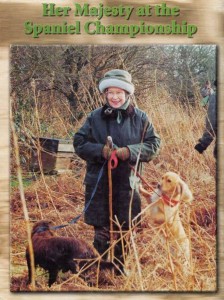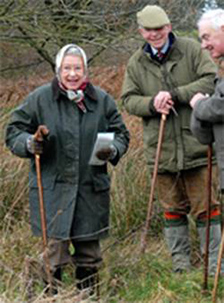To Breed or Not To Breed
Selection Index for Dogs
( published in Spaniels In The Field – fall 1999)
The goal of any breeding of a species of animal should always be to better the breed. In the purebred world of animal genetics, there are characteristics that can be specifically measured and provide a goal or range to achieve in planning the mating of a pair of animals. The livestock industry has rate of gain, weaning weight, pounds of milk produced, loin eye area and many other measurable traits.
What happens in the dog world? Breedings happen by accident, because I want to carry on the line (no matter how good or bad it is), because she is such a “nice” dog or because I like his looks. All of these are subjective traits determined by the judgment of the owner.
If the goal is to better the breed, then our decisions on breeding a pair of springers should have some objective breedable traits that can be measured or at least rated. There are some breedable traits and there are some trainable traits in springers that many novice dog breeders get confused.
Breedable traits such as size, color, temperament, soft mouth are easily identifiable. Other breedable traits such as perseverance in the field, cleanliness in a run, retrieve to hand, or nervousness are harder to identify and rate. How a dog performs on trainable traits such as heel, hup, and come should not enter into the breeding index. How a dog performs in the field, like Field Champion titles or hunt test titles, can enter in the breeding picture; however, those are not breedable traits, they are manmade. As we all know, breeding a field champion to a field champion does not necessarily produce all field champions.
In the livestock industry, a rating system is available that produces a selection index that can be used to compare the pluses and minuses of a particular pairing. In the springer world there is no selection index that can be universally applied by breeders when they attempt to reproduce their dog.
Sophie and I have developed a Selection Index that we use in our breeding program. This selection index has 16 breedable traits or factors. These factors have a value from 1 – 10 with the value of all 16 factors adding up to 100. The most important factors that we breed for carry the highest point value. Two factors carry a value of 10, the ability to use their nose, and the natural ability to retrieve to hand. These two factors are most important to us because in selling a gun dog to someone with little training or handling experience, if the dog has a natural ability to retrieve, it makes the trainer’s job much more pleasurable.
The list of factors we use are just phrases that have certain meaning when we rate them. These factors with their value are as follows:
10 ability to use nose
10 retrieve to hand
9 soft mouth delivery
8 strong body structure
7 perseverance in the field
7 strong head/shoulder structure
7 friendly to people
7 alertness as a pup
6 ability to hup straight
6 blaze of white/dark head
5 quick learner
5 size 40 – 50 pounds
4 carries tail high
4 ability to take training
3 clean dog in run/ housebreak
2 not nervous or high strung.
These traits are given a value from 2 to 10 which is listed on the left column. We then rate a dog by going right down the list of factors and putting a number from 1-10 in the rating column. Then the value number is multiplied by the rating number to get a score for each factor. These factor scores are added up and divided by 100 to get the selection index percentage. When rating each trait for each dog, an objective rating has to be used to get the true picture of the dog. There is no place for emotion when rating a dog. Each factor is rated one at a time without regards to the rating of the other factors.
When we first started using this system in our kennel our dogs rated in the middle 60% range and over the years we have increased the selection index percentage to be consistently over 90%. The goal is 100% Selection Index; however, that will never be achieved because that would be the “perfect dog” and remember every breeding is to better the previous results. The closer we get to 100% the more we find ourselves “tweaking” the rating.
When you are planning to breed your dog consider the breedable factors that will influence the outcome. Enhance the weaknesses of one parent with the strengths in the other and realize that sometimes some dogs should not reproduce.
Mark Haglin, together with his wife Sophie, own and operate Pine Shadows in Brainerd, Minnesota. Mark and Sophie have been raising and training English Springer Spaniels since 1975. Utilizing their educational degrees in education, animal genetics and animal science, they have produced springers that have been proven in the prairie potholes and upland coverts, in hunt tests and in field trials. Mark trains and handles springers professionally in many midwest trials.



